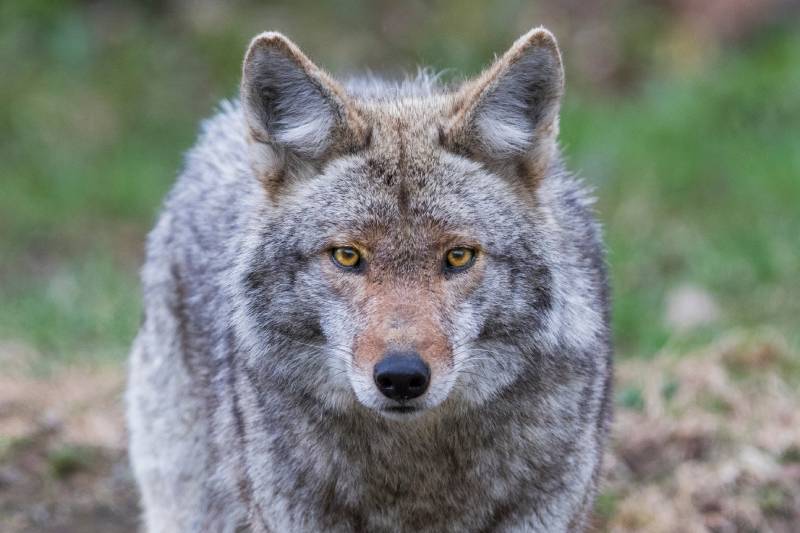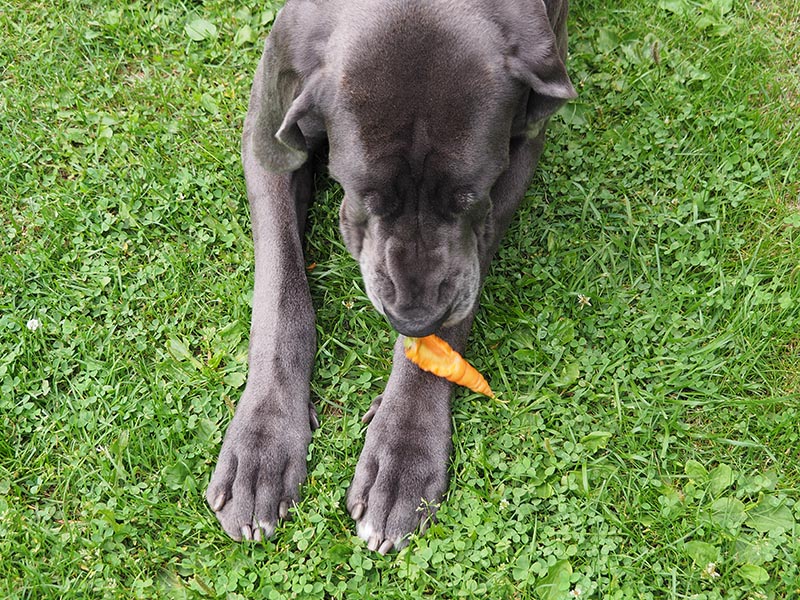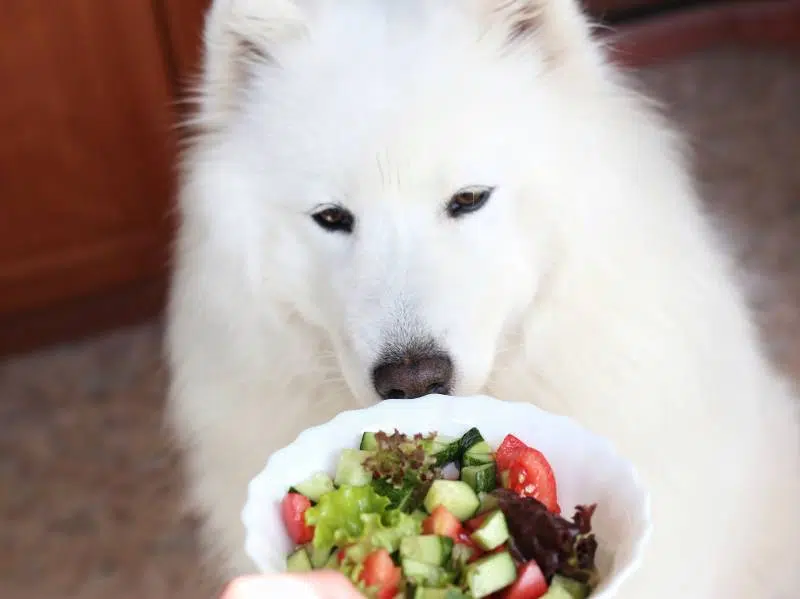We know that vegetables are a vital part of a healthy human diet, but is the same true for dogs? While vegetables can be a great addition to a dog’s diet, providing essential antioxidants, vitamins, minerals, and fiber with low calories, they are not strictly necessary. If a dog is already receiving a well-balanced diet, vegetables should only be given as treats and should be included in the daily calorie intake.

What Do Dogs Usually Eat?
Dogs are omnivores, meaning they consume both meat and plant-based foods. Wolves, one of the closest relatives of domestic dogs, and coyotes, another close relative, are opportunistic predators and scavengers. Wolves’ natural diet includes the internal organs of herbivores and partially digested plant material. They also consume the feces of plant-eating animals like rabbits, deer, and horses. Coyotes and wolves eat wild plants, particularly fruits.
Like wolves and coyotes, domestic dogs are opportunistic eaters. Over time, as they became domesticated and lived alongside humans, they developed specific traits that enable them to eat and digest a variety of foods. Their molars are adapted for grinding food, including plant material. Their digestive system, characteristic of omnivores, allows them to process a wide range of foods, from tough-to-digest plant matter to highly digestible animal proteins. Dogs also produce digestive enzymes that help break down starches.

Should You Feed Vegetables to Your Dog?
Dogs that are fed a nutritionally balanced, commercially available diet suitable for their life stage do not require vegetables to stay healthy. In the United States, most commercial dog food brands adhere to the nutritional standards set by the Association of American Feed Control Officials (AAFCO). These foods meet or exceed AAFCO’s established nutritional requirements for dogs, ensuring all essential nutrients are provided. If you are feeding your dog a homemade diet, it is highly recommended to consult a certified veterinary nutritionist to ensure a complete and balanced meal plan.
What Vegetables Can My Dog Eat?
Before feeding your dog vegetables, always wash them thoroughly to reduce bacteria and pesticide exposure. Remove stems, leaves, seeds, and pits. Chop vegetables into small pieces to prevent choking and gastrointestinal blockage. Cooking some vegetables enhances their digestibility while preserving fiber benefits. However, prolonged cooking may lead to vitamin loss. Do not add seasoning, butter, or oils, and avoid cooking vegetables with ingredients that are toxic to dogs, such as onions, garlic, or fatty foods. Canned vegetables should be avoided due to their high sodium content.
One significant benefit of feeding vegetables to dogs is increased fiber intake. Fiber helps add bulk and moisture to stool, softening hard stools and promoting regular bowel movements. However, some vegetables, like cabbage, broccoli, Brussels sprouts, and cauliflower, can cause gas. Cooking these vegetables improves digestibility and makes them gentler on your dog’s digestive system.
Vegetables are low in calories and fat, making them excellent treats for dogs on a weight-loss plan. However, they should not exceed 10% of your dog’s daily caloric intake.
Safe Vegetables for Dogs (Cooked or Raw in Moderation):
- Asparagus*
- Bell peppers
- Cabbage*
- Broccoli*
- Brussels sprouts*
- Carrots
- Cauliflower*
- Celery
- Kale
- Corn kernels
- Cucumber
- Green beans*
- Lettuce
- Store-bought, washed, unseasoned portobello mushrooms
- Radishes
- Ripe red tomatoes
- Squash
- Zucchini
(*Cooking recommended for better digestion.)

What Vegetables Should Dogs Avoid?
Some vegetables are toxic to dogs and should be avoided. Vegetables in the allium family, including garlic, onions, chives, leeks, and scallions, can cause red blood cell damage, leading to anemia. Symptoms of anemia in dogs include pale gums, lethargy, increased heart and respiratory rates, weakness, and collapse. These vegetables can also cause gastrointestinal issues such as nausea, drooling, vomiting, and diarrhea.
Beets and spinach are not toxic but should be fed in moderation. They contain high amounts of oxalates, which can lead to kidney and bladder stones, especially in susceptible dogs.
Vegetables to Avoid Feeding Dogs:
- Chives
- Corn on the cob
- Garlic
- Leeks
- Onions
- Rhubarb
- Scallions
- Unripe green tomatoes, and tomato plant leaves/stems
- Wild mushrooms
Vegetables to Feed with Caution Due to High Oxalate Content:
- Beets
- Spinach

Tips for Keeping Your Dog Healthy and Safe
- Always wash vegetables before feeding them to your dog.
- Remove all seeds, pits, and inedible parts.
- Cut vegetables into small pieces to prevent choking or intestinal blockage.
- Cooking vegetables can enhance digestibility and make them easier on your dog’s stomach.
- Limit vegetable intake to no more than 10% of your dog’s daily caloric intake.
- Be cautious of toxic vegetables such as garlic, onions, and chives.
- Consult your veterinarian before introducing new foods into your dog’s diet.

Conclusion
While vegetables can be a healthy addition to your dog’s diet, they are not necessary if your dog is already receiving a complete and balanced diet. Vegetables can be fed raw or cooked, though some are easier to digest when cooked. However, not all vegetables are safe for dogs, and excessive consumption can lead to toxicity or digestive issues. Always ensure that vegetables make up no more than 10% of your dog’s daily caloric intake and consult your veterinarian before making any dietary changes.
See also:



Pingback: 6 Safe & Nutritious Carbohydrate Sources for Dogs - Happy Paws Spot